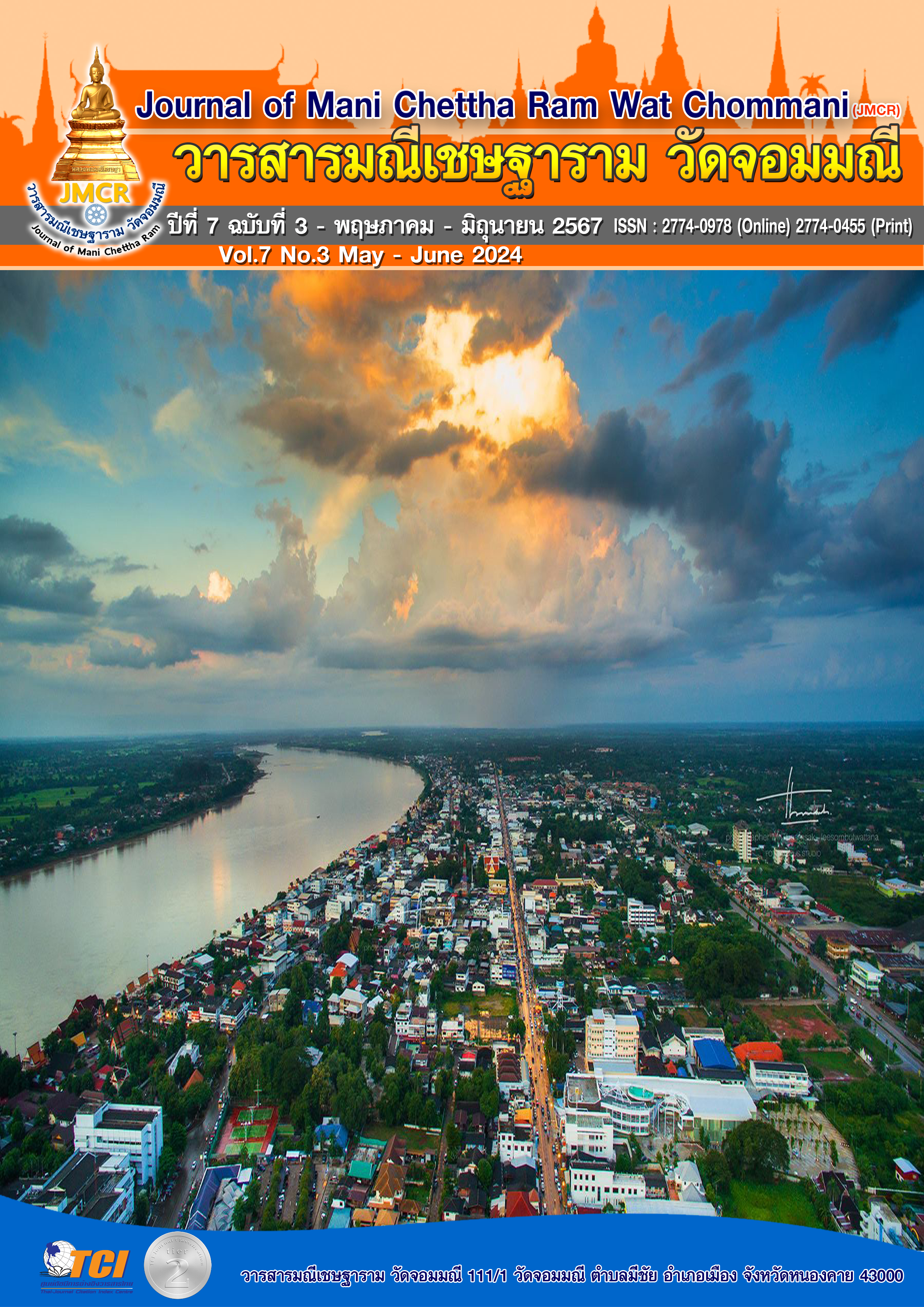A MODEL FOR MANAGING EDUCATIONAL ADMINISTRATION IN SCHOOLS UNDER THE OFFICE OF THE BASIC EDUCATION COMMISSION
Abstract
This research aims to 1. Study the components and approaches for managing educational administration innovation in schools under the Office of the Basic Education Commission 2. Create and verify the model for managing innoations and 3. Evaluate the feasibility and benefits of the innovation management model. Qualitative research methodology using three-step reseach and development approach: Step 1: Study the components of innovation management susing ynthesis of documents, study of innovation management guidelines through interviews with experts, study of innovation management practices from schools with best practices. Step 2: Create and validate the innovation management model by drafting the innovation management model, and validating the appropriateness of the model through focus group discussions. Step 3: Feasibility evaluation by school administrators from six provinces, selected through stratified random sampling, five schools per province. Data were analyzed using mean and standard deviation.
The findings revealed that the model for managing educational administration innovation in schools consists of five components: Objectives are: 1.1) Define guidelines for innovation management 1.2) Create and develop innovations 1.3) Enhance students' learning achievements. Principles are:
2.1) Change management principles 2.2) Learner-centered principles 2.3) Knowledge management principles. 3. Input factors for innovation management are: 3.1) Innovative characteristics of administrators, teachers, and staff
3.2) Innovation management committees 3.3) Learning resources, media, and technology 4. Innovation management processes are Step 1: Problem analysis Step 2: Planning and design Step 3: Implementation of innovation Step 4: Evaluation Step 5: Dissemination of innovation 5. Outputs are: 5.1) Process innovations 5.2) Product innovations 5.3) Management innovations. The feasibility assessment results showed a high level of feasibility and the highest level of usefulness.
References
กรรณิการ์ สิทธิชัย. (2561). การจัดการองค์กรตามแนวคิด 7s ของ McKinsey ที่เอื้อต่อการเป็นองค์กรนวัตกรรม กรณีศึกษาองค์กรที่ได้รางวัลองค์กรนวัตกรรมยอดเยี่ยม. วารสารมหาวิทยาลัยศิลปากร, 11(3), 1419-1435.
จักรกฤษณ์ สิริริน. (2561). Innovation Management ติดปีกสถานศึกษาสู่ยุค 5.0. เรียกใช้เมื่อ 25 กันยายน 2564, จาก https://www.salika.co/2019/09/05/innovationmanagement-educational -5-0-era
จีราภา ประพันธ์พัฒน์. (2560). การศึกษาภาวะผู้นำเชิงนวัตกรรมของผู้บริหารสถานศึกษา ตามความคิดเห็นของครูสังกัดสำนักงานเขตพื้นที่การศึกษาประถมศึกษาปทุมธานี. ใน ปริญญานิพนธ์ปริญญาดุษฎีบัณฑิต. มหาวิทยาลัยเทคโนโลยีราชมงคลธัญบุรี.
นวชล สมบูรณ์สิน. (2564). รูปแบบการจัดการนวัตกรรมทางการบริหารในสถานศึกษาขั้นพื้นฐาน. ใน วิทยานิพนธ์ สาขาวิชาการบริหารการศึกษา หลักสูตรการศึกษาดุษฎีบัณฑิต มหาวิทยาลัยนเรศวร
บุญชม ศรีสะอาด. (2552). การวิจัยเกี่ยวกับการบริหารการศึกษา. กรุงเทพมหานคร: สุวีริยาสาสน์.
ปัญญา เลิศไกร. (2562). การจัดการนวัตกรรมการพัฒนาองค์กร. เรียกใช้เมื่อ 2 กันยายน 2564, จาก https://so03.tci-thaijo.org/index.php/JMND/article/view/218069
พยัต วุฒิรงค์. (2563). การจัดการนวัตกรรม: ทรัพยากร องค์การแห่งการเรียนรู้และนวัตกรรม. กรุงเทพมหานคร: สำนักพิมพ์แห่งจุฬาลงกรณ์มหาวิทยาลัย.
วุฒิพงษ์ ภักดีเหลา. (2554). การศึกษาคุณลักษณะขององค์การนวัตกรรม:กรณีศึกษาองค์การที่ได้รับรางวัลด้านนวัตกรรม. กรุงเทพมหานคร: มหาวิทยาลัยศรีนครินทรวิโรฒ.
สำนักงานคณะกรรมการพัฒนาการเศรษฐกิจและสังคมแห่งชาติ. (2563). แผนปฏิรูปประเทศ (พิมพ์ครั้งที่ 3). กรุงเทพมหานคร: สำนักงานเลขานุการของคณะกรรมการยุทธศาสตร์ชาติสำนักงานคณะกรรมการพัฒนาการเศรษฐกิจและสังคมแห่งชาติ.


